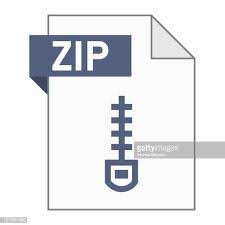Description
Part 1. Reading from a file
1. Create a new Java Project for this lab assignment. Call it Lab10.
2. Download the data file, called Lab10-state-data.txt from D2L. It is located in
the week14 folder. This file includes population information about the 50 USA
states. Each line in the file consists of three fields where the first number is the
overall state population, the second number the adult population, and the third field
is the state name. For example, the following are the first few lines in the file:
4874747 3779274 Alabama
739795 554867 Alaska
7016270 5382780 Arizona
3004279 2298739 Arkansas
39536653 30476517 California
3. On your computer, find the directory where your Eclipse projects are created and
find project Lab10. Put the data file in the directory Lab10. The directory will look
something like this:
4. Inside Lab10 project, create a file and call it ‘FileIO.java’, and this file should
include only the main method.
5. Write Java code to ask the user to enter the file name and then read the user input.
6. Create a File object using the file name that is entered by the user.
7. Create a Scanner object to read from the File object that you created in the
previous step.
8. Write a loop that uses hasNextLine() to read the file one line at a time and
display the data on the screen. Inside the loop, read one line from the file using
nextLine() and print the line on the screen. At the end of the loop, print how
many lines are there in the file.
9. When you run your program, you should see all the file contents printed on the
screen.
Part 2. Writing to a file
13. In this part of the lab, you will read the data from the input file, process it, and save
it another file.
14. In this step, you will write the output to a file instead of writing it to the screen.
Create a PrintWriter object and assign it to the output file name. Then, add a
statement inside your ‘while’ loop to print the output to the output file in addition
to printing it to the screen.
15. Outside the loop, close the PrintWriter object so that you can open and read your
output file.
16. Open the output file and make sure that the data is correctly written.
Upload your work to D2L
1. Right click on the src folder and choose the Export… option.
2. When asked to choose an Export Wizard, double click on General.
3. Then click Archive File and Next. Make sure the radio button next to Save in zip format is
selected.
4. Use the Browse function to navigate to the H: drive, then make up a name for your file. You
can name your archive file anything but it helps me find your work if you use your last name
and the name of the lab so choose something like DillonLab10. Click Finish.
5. Now login to D2L. From the home page, click on the Assessments drop down menu and
select Assignments.
6. From the Assignment Submission Folders page, select the Lab10 drop box.
7. Click on Add a File, browse for the archive (.zip) file you created with Eclipse and Upload it.
You can add a note if you like but you don’t have to. Click Submit to finish up.
NOTE: To receive credit for this lab, you are expected and MUST work with another
student and to demonstrate your solution (even if it is partially completed) to the
instructor before you leave class on Wednesday, April, 12th, 2023. If you are
unable to demo your solution to the instructor, continue to work on the lab Only
if you upload a version of your code to D2L during the lab session on April 12th,
you may upload a completed version to the assigned D2L folder by Sunday, April
16th at 11:59 PM.


